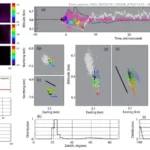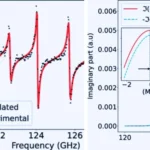Key Points
- New research challenges the theory that Neanderthals originated after a genetic bottleneck event. Fossil samples were analyzed for inner ear morphology.
- Findings show that classic Neanderthals had lower morphological diversity than their ancestors.
- The study contradicts the idea that pre-Neanderthals had lower genetic diversity due to a bottleneck.
- The study aligns with previous paleogenetic findings but challenges traditional evolutionary models.
A new study on inner ear morphology has challenged the widely accepted theory that Neanderthals originated following a genetic bottleneck event. The research, published in Nature Communications, is based on fossil samples from Atapuerca (Spain), Krapina (Croatia), and other European and Western Asian sites.
Neanderthals are believed to have evolved around 250,000 years ago from pre-Neanderthals, who lived between 500,000 and 250,000 years ago. It was long assumed that early Neanderthals lost genetic diversity due to a population reduction event. However, new paleogenetic research has provided evidence of a genetic diversity loss approximately 110,000 years ago, but not at the origin of the Neanderthal lineage.
The study, led by Alessandro Urciuoli from the Institut Català de Paleontologia Miquel Crusafont and Mercedes Conde-Valverde from Universidad de Alcalá, focused on the semicircular canals of the inner ear, which are responsible for balance. Researchers compared fossil samples from two major sites:
- Sima de los Huesos (Spain) – 430,000-year-old pre-Neanderthal fossils, the largest collection.
- Krapina (Croatia) – 130,000–120,000-year-old early Neanderthal fossils are among the most complete collections.
The team measured morphological diversity in these fossils and compared them to classic Neanderthals from different ages and regions. The findings revealed that classic Neanderthals had significantly lower morphological diversity than pre-Neanderthals and early Neanderthals, aligning with previous paleogenetic results.
However, the study also challenges the assumption that a significant genetic bottleneck marked Neanderthals’ origin. According to Urciuoli, the Sima de los Huesos pre-Neanderthals displayed similar diversity to the Krapina early Neanderthals, contradicting earlier beliefs.
Conde-Valverde emphasized that the study’s inclusion of fossils from a wide geographical and temporal range provided a clearer picture of Neanderthal evolution. The researchers suggest that new hypotheses are needed to explain the origins of Neanderthals, as the traditional bottleneck theory may not be valid.










